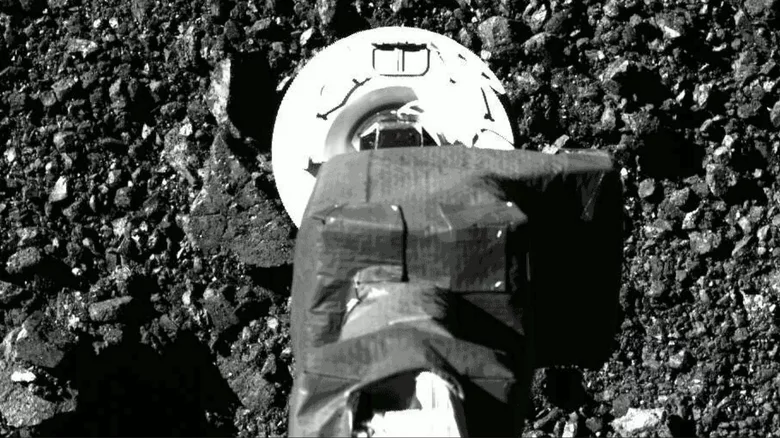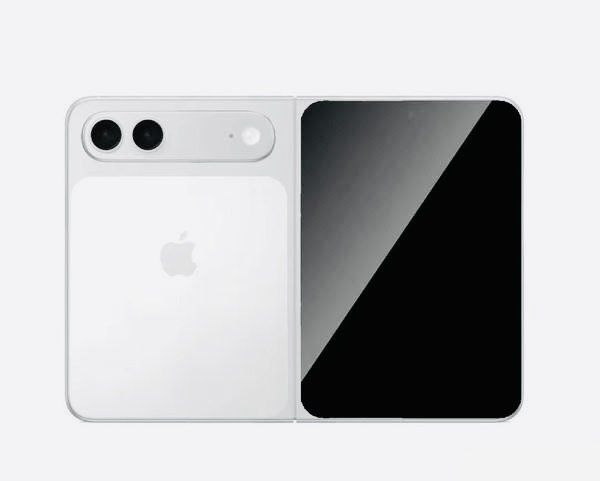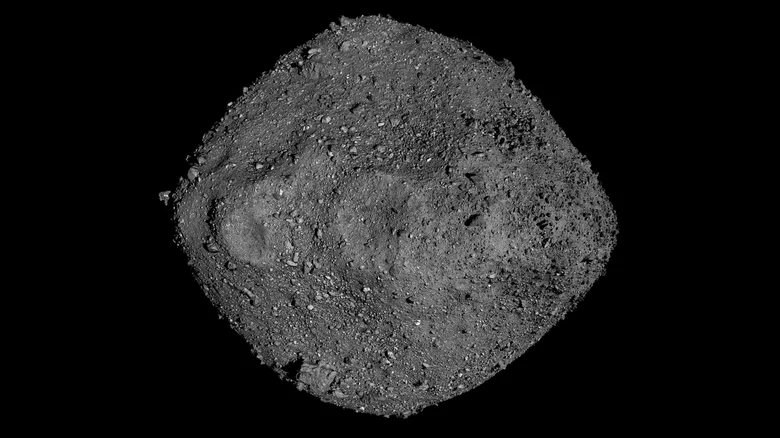OSIRIS-REx, the first US spacecraft to collect asteroid samples, will return with asteroid pebbles and soil samples in just over a year. However, he came close to “drowning” on the surface of the asteroid Bennu. NASA reported that while collecting samples from asteroid Bennu in October 2020, the spacecraft’s sampler handle sank more than 30 cm into the loose surface layer with no resistance from the ground. The spacecraft miraculously did not land on loose ground, started its engines and moved away from the dangerous area.
University of Arizona planetary sciences professor Dante Loretta showed that “the particles that make up Bennu’s outer shell flow so freely and stick together so freely that they act more like a liquid than a solid.” Experts involved in the mission likened the experience to jumping into a pool of hollow plastic balls.
When OSIRIS-REx first arrived at its destination, asteroid Bennu’s surface looked more like rough terrain, filled with rocks and pebbles of varying sizes, rather than the smooth, beach-like surface originally expected. The asteroid’s surface is a bunch of rocky elements of various sizes, loosely held together by gravitational and electrostatic bonds. The peculiar nature of the surface also explains why the spacecraft sank to the asteroid’s surface even when the engines were running.

While the possible loss of the OSIRIS-REx spacecraft left the team in a difficult position, it also provided some important lessons.
The most important of these is that scientists now have an idea of what to expect from future asteroid missions and can design spacecraft and probe accordingly to avoid surface disasters. Another notable finding is that asteroids as brittle as Bennu pose another threat to Earth, as they are likely to break apart in the event of a collision.
The latest results of the OSIRIS-REx mission are presented in two articles: “Spacecraft Sample Collection and Subsurface Excavation of Asteroid (101955) Bennu”, published in the journal Science and “Virtually Zero Cohesion and Loose Subsurface Layers of Bennu Discovered by Spacecraft Contact “, which appeared in the July 2022 issue of Science Advances. Launched in September 2016 aboard an Atlas V 411 from Cape Canaveral, the OSIRIS-REx spacecraft will return with regolith samples on September 24 next year. It will be followed by another exploration mission that will target the asteroid Apophis and is expected to launch in 2029.
For the experiment with the thermal destruction of weeds, I took a cheap construction hair dryer for 989 rubles to test. They promised 2000 W and 650 °, alas, they turned out to be only promises. The label says…
Each profession has its own special tool, which in the daily life of people of other professions may not be used at all, or may be similar to others, but differ in details. Yes in…
For a modern person, a mobile phone is an integral part of life, and a SIM card, respectively, is an integral part of the mobile phone itself. Probably not many people know that a SIM card…
When the radio played me one of the songs of the singer with the strange pseudonym Winesmoke, I immediately began to find out who she was and what else she had. The pseudonym turned out to be clever – Winesmoke is…
The festival of vintage cars and retro buses is dedicated to the Moscow Transport Day. This is an opportunity to see LiAZ, LAZ, Ikaruse, RAF, PAZ, Volga police, ZIS firefighters, and even home-made …
In this review, we will talk about a budget headset with a 3.5mm audio jack, which offers a good level of comfort, balanced sound, and a microphone. How do the headphones sound? What are the feelings of…
Source: IXBT










